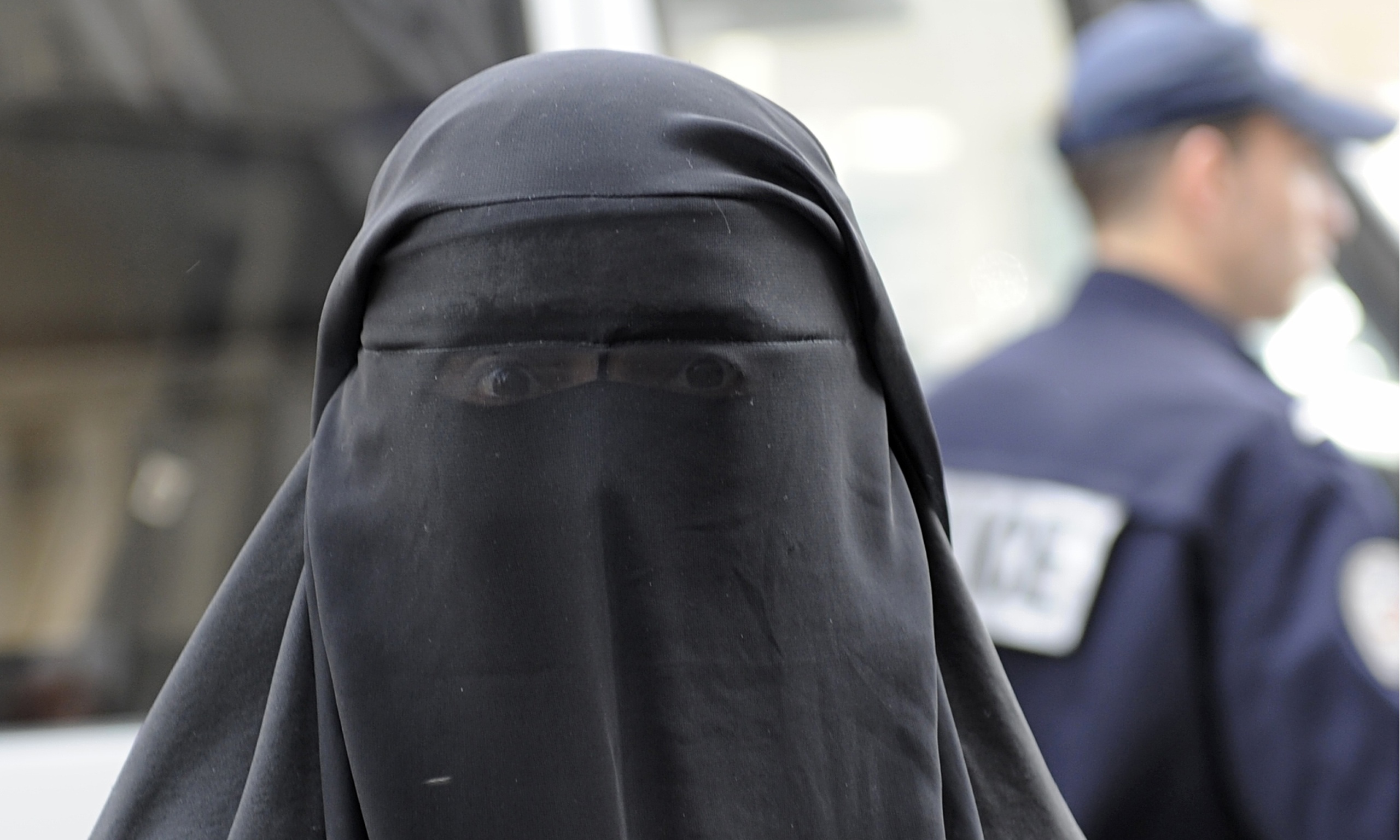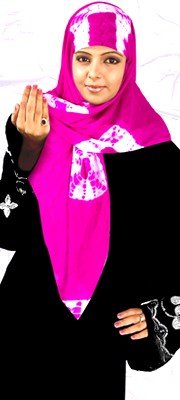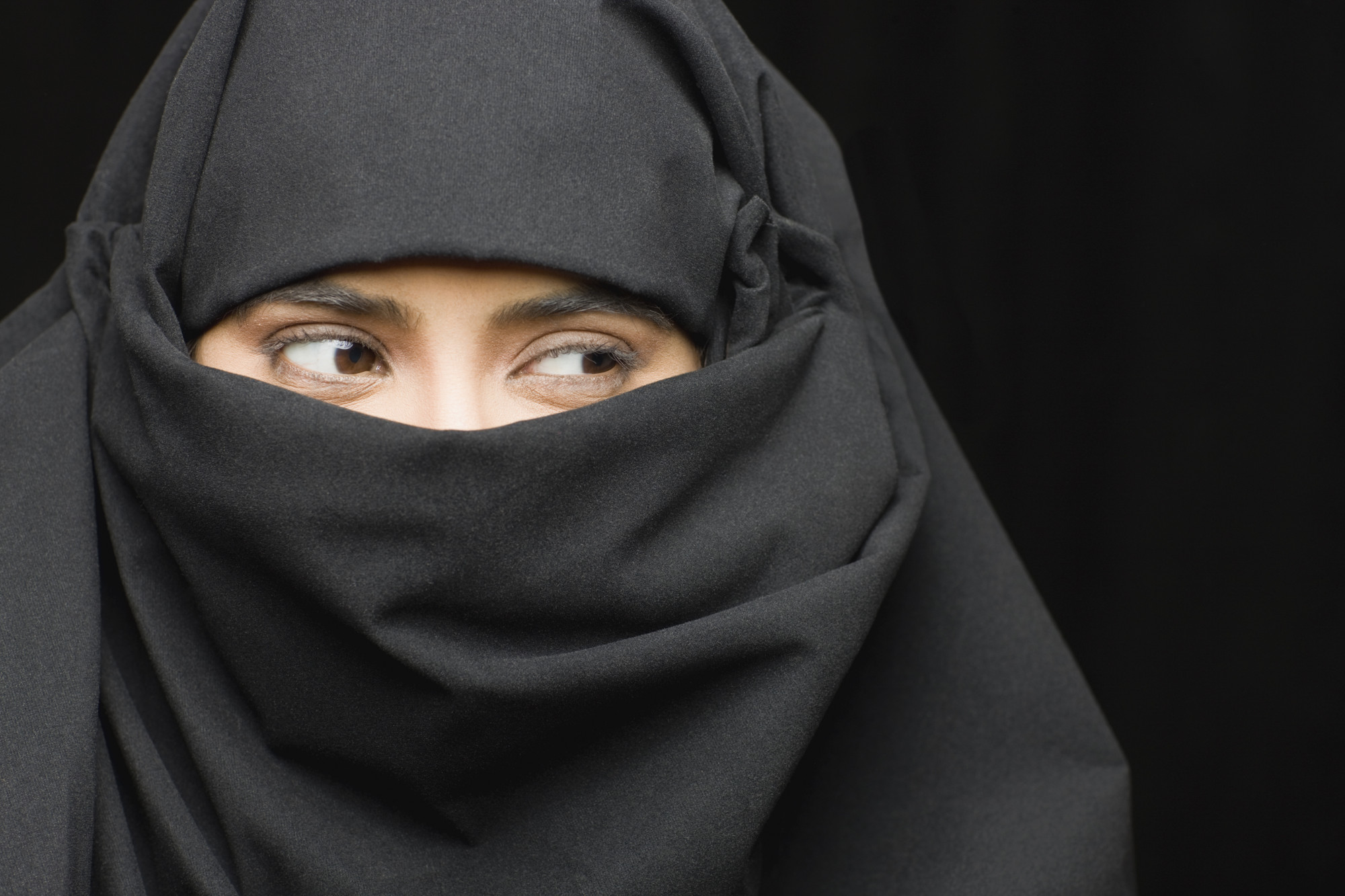About Burka Photo
Source (google.com.pk)
A long, flowing garment that covers the whole body from head to feet, the burka, also known as burqa or abaya, is an important part of the dress of Muslim women in many different countries. Some burkas leave the face uncovered, but most have a cloth or metal grid that hides the face from view while allowing the wearer to see. The exact origin of the burka is unknown, but similar forms of veiling have been worn by women in countries such as India, Pakistan, Saudi Arabia, and Afghanistan since the beginning of the Muslim religion in 622 c.e.
The Koran, the holy book of Islam, directs believers to cover themselves and be humble before God. Different societies and religious leaders have interpreted this command of the Koran in many different ways, often requiring both men and women to cover their heads as a sign of religious respect. Some Muslim societies have required women to cover themselves more modestly than men, covering not only their heads but also most of their bodies and even their faces. The burka is one example of very modest clothing worn by Muslim women.
The burka has mainly been worn in very conservative Muslim cultures, which often restrict the movement and power of women. Young girls are not required to cover themselves with a burka, but at puberty or marriage they begin to wear it. While women do not wear the burka while they are home with their families, they are required to wear it when they are in public or in the presence of men who are not family members. In many places the burka was first worn as a sign of wealth and leisure, because a woman could not easily work while wearing the long garment.
Though the burka often appears confining and limiting to Western eyes, many devout Muslim women choose to wear the long veil. Some say that the coverage of the burka gives them a privacy that actually makes them feel freer to move about in society. However, others say that even though the burka protects women from the staring eyes of strange men, it does not prevent the wearer from being touched or pinched by passing men. Also, many Muslim women who live in very conservative societies are forced to wear the burka whether they want to or not, and many have been punished harshly for refusing to cover themselves as their authorities demand.
A burka is an article of clothing worn as an outermost layer by women of certain Islamic traditions. The garment is worn over the attire that the wearer considers normal daily clothing, and is removed when the wearer returns to her home. This is primarily intended to prevent the woman's body and face from being seen in public, particularly by men who are not her husband or in her family. Wearing a burka can also be seen as a declaration of religious faith and sentiments, much like other forms of religious garb.
The garment itself is symbolic of a specific tradition, and criticisms of women who wear a burka are usually not about the garment itself, but about what it stands for. These garments are typically made of fabric that covers the whole body, which is pleated and attached to a skullcap. A slit or a mesh area is left around the eyes so that the wearer can see. Without much form fitting structure, the garment reveals little of even the human silhouette, such that no aspect of the form of the shoulders, torso, or legs is apparent.
Although black and blue are the most common burka colors in most of the world, the garment is occasionally seen in other colors. Burkas are embroidered in some traditions, and can be made of many different fabrics including cotton and silk. This garment should not be confused with other interpretations of hijab, many of which allow the face to be shown. While these other garments are also presentations of an Islamic woman's call to modesty, they are considered a different class of clothing.
Burkas have become highly politicized items of clothing from many standpoints, both within the Muslim community and in non-Islamic contexts. Opponents to this tradition claim that burkas are oppressive to women, and that they not only represent but also cause this oppression. They are often in favor of banning them, particularly for young women in school.
Both male and female supporters of the garment claim that wearing it is a right, one that should not be taken away by purportedly secular sources. There are abundant testimonies of Muslim women who assert that they are not oppressed and that they choose to wear burkas, and these are often used to support the position that these clothes are not enforcing sexism.
In some countries of Islamic tradition, such as areas in Afghanistan and Pakistan, women have been compelled by certain groups to wear full burkas in the face of severe penalties. The Taliban, for instance, has been an enforcer of burkas, along with other measures to aggressively protect the chastity of women. While the clothing itself may not be oppressive, there are certainly cases such as this in which the garment has been used as a tool to oppress women.
Burka Photo Abaya Designs 2014 Dress Collection Dubai Styles Fashion Pics Photos Images Wallpapers

Burka Photo Abaya Designs 2014 Dress Collection Dubai Styles Fashion Pics Photos Images Wallpapers

Burka Photo Abaya Designs 2014 Dress Collection Dubai Styles Fashion Pics Photos Images Wallpapers

Burka Photo Abaya Designs 2014 Dress Collection Dubai Styles Fashion Pics Photos Images Wallpapers

Burka Photo Abaya Designs 2014 Dress Collection Dubai Styles Fashion Pics Photos Images Wallpapers

Burka Photo Abaya Designs 2014 Dress Collection Dubai Styles Fashion Pics Photos Images Wallpapers

Burka Photo Abaya Designs 2014 Dress Collection Dubai Styles Fashion Pics Photos Images Wallpapers

Burka Photo Abaya Designs 2014 Dress Collection Dubai Styles Fashion Pics Photos Images Wallpapers

Burka Photo Abaya Designs 2014 Dress Collection Dubai Styles Fashion Pics Photos Images Wallpapers

Burka Photo Abaya Designs 2014 Dress Collection Dubai Styles Fashion Pics Photos Images Wallpapers

Burka Photo Abaya Designs 2014 Dress Collection Dubai Styles Fashion Pics Photos Images Wallpapers

Burka Photo Abaya Designs 2014 Dress Collection Dubai Styles Fashion Pics Photos Images Wallpapers

Burka Photo Abaya Designs 2014 Dress Collection Dubai Styles Fashion Pics Photos Images Wallpapers

Burka Photo Abaya Designs 2014 Dress Collection Dubai Styles Fashion Pics Photos Images Wallpapers

Burka Photo Abaya Designs 2014 Dress Collection Dubai Styles Fashion Pics Photos Images Wallpapers

Burka Photo Abaya Designs 2014 Dress Collection Dubai Styles Fashion Pics Photos Images Wallpapers

Burka Photo Abaya Designs 2014 Dress Collection Dubai Styles Fashion Pics Photos Images Wallpapers

Burka Photo Abaya Designs 2014 Dress Collection Dubai Styles Fashion Pics Photos Images Wallpapers

Burka Photo Abaya Designs 2014 Dress Collection Dubai Styles Fashion Pics Photos Images Wallpapers

Burka Photo Abaya Designs 2014 Dress Collection Dubai Styles Fashion Pics Photos Images Wallpapers

Burka Photo Abaya Designs 2014 Dress Collection Dubai Styles Fashion Pics Photos Images Wallpapers
Burka Photo Abaya Designs 2014 Dress Collection Dubai Styles Fashion Pics Photos Images Wallpapers

Where can i order these abaya
ReplyDelete